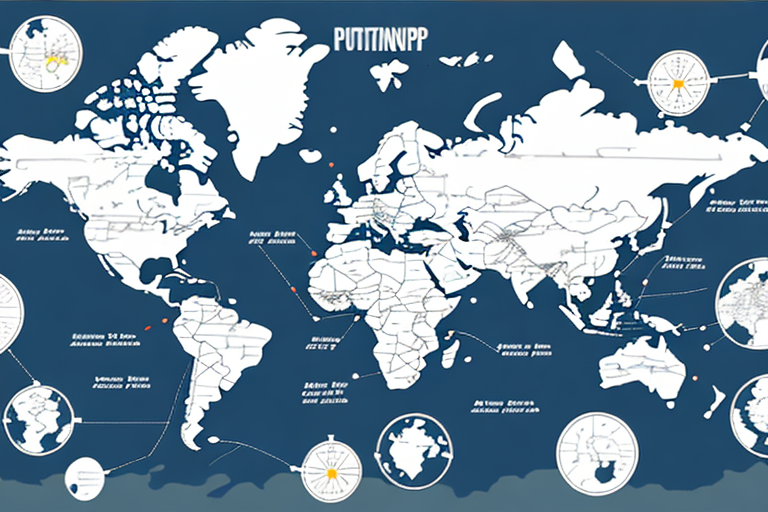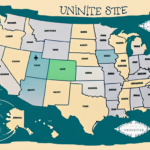Understanding UPS Shipping Zones
Are you tired of paying high shipping costs? Do you want to improve your business's bottom line? Then it's time to dive into the world of UPS shipping zones. In this article, we will explore everything you need to know about UPS shipping zones, from what they are to how they affect shipping costs and delivery timeframes. So, let's get started!
What are UPS Shipping Zones and Why Do They Matter?
UPS shipping zones are geographic regions used by UPS to determine shipping rates and delivery timeframes. The United States is divided into nine shipping zones, with Zone 1 being the closest and Zone 9 being the farthest from the shipping origin. The closer your package is to its delivery destination, the lower the shipping cost and the faster the delivery. Conversely, packages that are farther away will take longer to deliver and incur higher shipping costs.
Understanding UPS shipping zones is crucial for optimizing your shipping costs and delivery times. By accurately identifying your shipping zone, you can choose the most cost-effective shipping service and reduce delivery times. Incorrectly identifying your shipping zone can lead to higher shipping costs and longer delivery times.
It's also important to note that UPS shipping zones can change over time. UPS regularly updates its shipping zone maps based on changes in transportation infrastructure and delivery routes. Staying up-to-date with any changes ensures that you are always choosing the most cost-effective shipping service and maintaining efficient delivery schedules.
How UPS Shipping Zones Affect Delivery Timeframes
Delivery timeframes are directly influenced by the distance between the shipping origin and destination. Packages shipped to nearby zones will be delivered faster, while those shipped to faraway zones will take longer. For example, a package shipped from Los Angeles to San Francisco (both in Zone 2) will arrive faster than a package shipped from Los Angeles to New York (in Zone 8).
The Relationship Between Package Weight and Shipping Zones
Package weight plays a significant role in determining shipping costs and delivery timeframes. Heavier packages generally cost more to ship and may take longer to deliver than lighter packages. However, the impact of weight on delivery times is not as pronounced as the geographic distance. UPS considers a combination of factors, including package weight, shipping destination, and selected shipping service, to determine delivery times.
Additionally, the size and dimensions of a package can impact shipping costs and delivery times. Oversized packages may incur additional fees and take longer to deliver due to their size and weight. Packages requiring special handling, such as those containing hazardous materials or fragile items, may also have longer delivery times and higher shipping costs.
Determining Your UPS Shipping Zone
How to Determine Your Shipping Zone
To determine your shipping zone, you need the shipping origin ZIP code and the destination ZIP code of your package. With this information, you can use the UPS Zone Locator tool on the UPS website to find your shipping zone. Simply enter the ZIP codes, and the tool will display your shipping zone.
Determining your shipping zone before sending out a package is essential, as it affects both cost and delivery time. Shipping to a zone farther from your origin ZIP code typically costs more and takes longer to deliver. Knowing your shipping zone allows you to accurately calculate shipping costs and choose the appropriate shipping method to ensure timely delivery.
Tools for Identifying Shipping Zones
In addition to the UPS Zone Locator, there are various shipping software solutions and online calculators that can help determine shipping zones. Utilizing these tools can streamline the process and reduce the likelihood of errors in zone identification.
Cost Implications and Optimization Strategies
The Cost Implications of Different UPS Shipping Zones
The cost of shipping a package with UPS varies based on the destination shipping zone, package weight, and selected shipping service. Generally, packages shipped to nearby zones cost less than those shipped to farther zones. These cost differences can be significant for businesses that regularly ship heavy packages to distant destinations.
For instance, according to the UPS Business Shipping Guide, shipping costs can increase by up to 50% when moving from Zone 2 to Zone 8 for similar package sizes and weights.
Strategies for Optimizing Your UPS Shipping Costs Based on Zones
- Identify Your Shipping Zone Accurately: Use reliable tools to determine the correct shipping zone for each package.
- Explore Different Shipping Services: Compare costs and delivery times of various UPS services to find the most economical option.
- Consider Shipping Lighter Packages: Reducing package weight can lower shipping costs, especially for long-distance shipments.
- Negotiate with UPS for Better Rates: Businesses with high shipping volumes can negotiate discounted rates with UPS.
- Use Shipping Technology: Implement shipping software to automate processes and minimize errors.
Another effective strategy is consolidating shipments. By combining multiple packages into a single shipment, businesses can reduce the number of shipments and overall costs. Additionally, leveraging UPS's flat-rate shipping options can provide cost savings for heavier packages or those sent to farther zones.
Best Practices for Maximizing Efficiency in UPS Shipping Zone Operations
- Accurate zone identification to avoid overcharging.
- Utilize technology to streamline shipping processes.
- Regularly track and monitor shipping costs and delivery times.
- Use multiple shipping services to minimize risk and optimize costs.
- Continuously review UPS shipping performance to identify improvement areas.
Leveraging Technology in UPS Shipping Zone Management
The Role of Technology in Streamlining UPS Shipping Zone Management
Shipping technology plays a pivotal role in managing UPS shipping zones efficiently. Shipping software can automate shipping processes, reduce errors, and optimize shipping costs. These tools also assist in tracking packages, managing inventory, and providing real-time shipment updates to customers.
Moreover, data analytics can offer insights into shipping trends and patterns, enabling businesses to make informed decisions about their shipping strategies. For example, analyzing shipping data can reveal which shipping routes are more cost-effective or identify regions with high demand for certain products.
Enhancing customer service is another benefit of leveraging technology. Providing customers with real-time tracking information and shipment updates increases transparency and builds trust. Additionally, offering advanced shipping options, such as expedited or same-day delivery, can help meet customer needs and maintain a competitive edge in the market.
Common Challenges and Solutions
Common Mistakes to Avoid When Working with UPS Shipping Zones
- Using the Wrong Shipping Origin ZIP Code: Ensure the origin ZIP code is accurate to determine the correct shipping zone.
- Failing to Consider Package Weight: Weight significantly impacts shipping costs; always factor it in when choosing a shipping service.
- Choosing the Wrong Shipping Service: Select a shipping service that aligns with your delivery timeline and budget.
- Ignoring Accurate Shipping Zone Identification: Misidentifying zones can lead to incorrect shipping rates and delivery delays.
- Not Leveraging Shipping Technology: Utilize available shipping technologies to optimize zone management and reduce errors.
By being aware of these common mistakes, businesses can implement strategies to avoid them, ensuring more efficient and cost-effective shipping operations.
Case Studies and Future Trends
Case Studies: How Businesses Have Successfully Improved Their Bottom Line by Leveraging UPS Shipping Zones
Many businesses have enhanced their profitability by effectively utilizing UPS shipping zones. For example, a small retail business significantly reduced its shipping costs by switching from a flat-rate shipping service to a zone-based shipping service. By accurately identifying the shipping zones of its packages, the business could select the most cost-effective shipping option, leading to substantial savings without compromising delivery times.
Future Trends and Developments in the World of UPS Shipping Zones
- More Accurate Zone Identification Technology: Advancements in technology will lead to more precise zone determination.
- New Shipping Services and Pricing Models: UPS is expected to introduce innovative shipping services and flexible pricing structures.
- Increased Use of Automation and Machine Learning: Automation will streamline shipping operations, while machine learning can predict shipping trends and optimize strategies.
- Improved Tracking and Transparency: Enhanced tracking systems will provide better visibility for both businesses and customers.
Staying informed about these trends allows businesses to adapt and continue optimizing their shipping strategies effectively.
Conclusion
In conclusion, UPS shipping zones are a crucial component of the shipping industry. By understanding these zones and how they affect shipping costs and delivery times, businesses can optimize their shipping operations and improve their bottom line. Whether you are a small business owner or a large e-commerce retailer, mastering the world of UPS shipping zones can help you save money, deliver packages faster, and provide a better customer experience. Explore the world of UPS shipping zones today to enhance your shipping efficiency and business profitability!






















